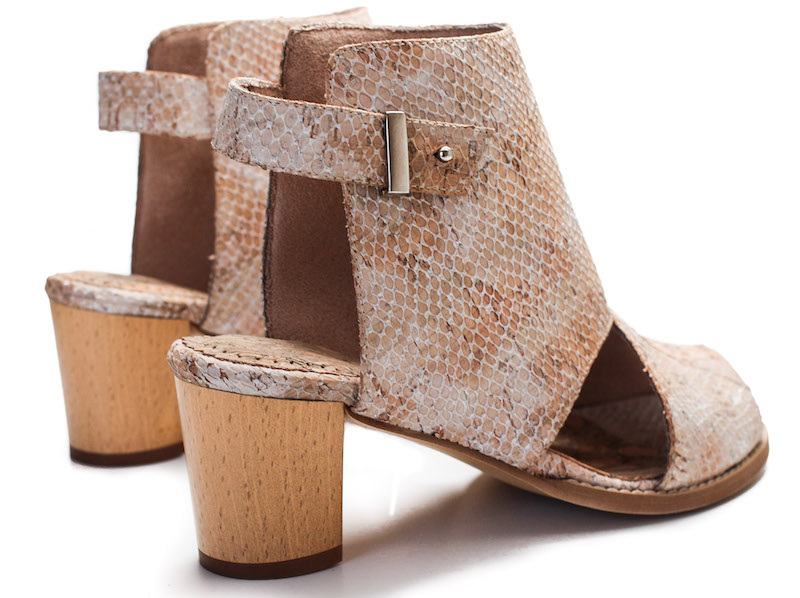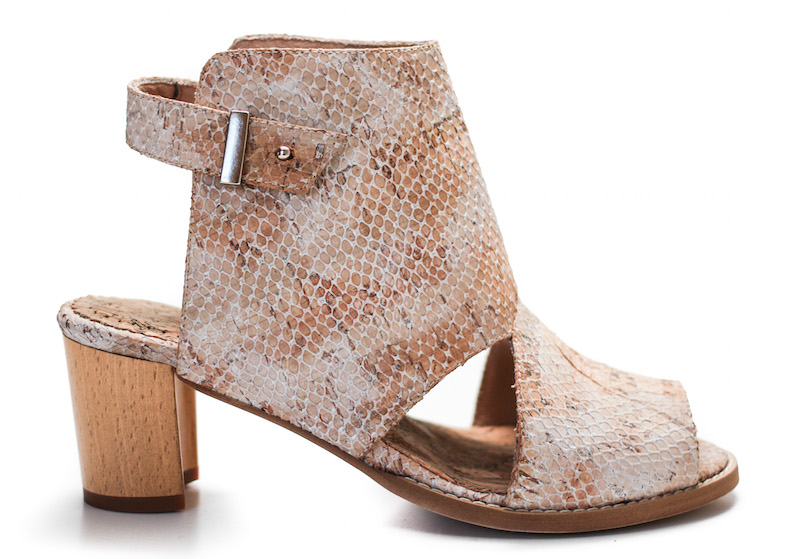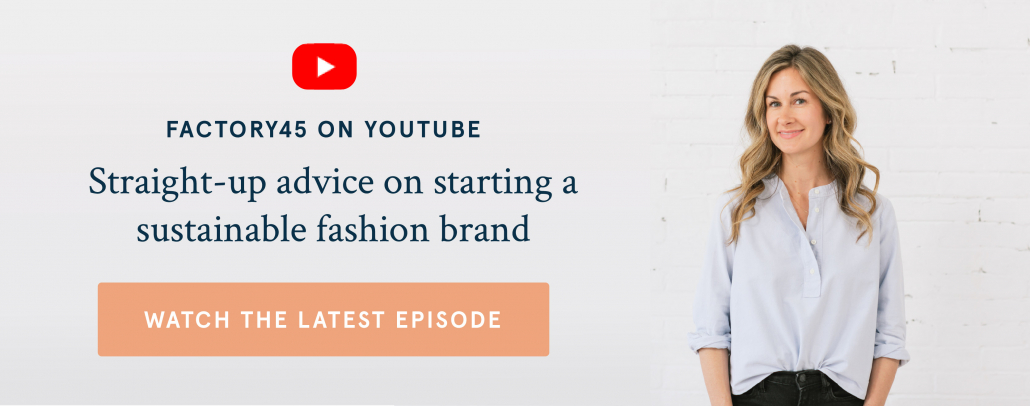Making It: Startup Advice from the Founder of Bhava
Francisca Pineda is the founder and designer of Bhava, a conscious footwear company. We first met in NYC last year for lunch, and I learned that not only is she a designer, but she also organizes sustainable fashion retreats in Costa Rica and teaches ethical design classes at FIT.
Today, Francisca is digging deep into her advice for new designers and giving us an insider’s perspective into what it’s like to be a business owner in the fashion industry. From sourcing to sketching to marketing, Francisca is a pro at what she does and it shows. Enjoy!
How did you get started launching Bhava?
I think like most other designers, it started because I couldn’t find what I wanted in the market place. After graduating from Parsons, I started working for a high-end apparel brand and was in charge of all of their accessories. By the time I launched Bhava I had experience in every category of accessory design.
Launching Bhava was something I had actually started planning back in 2009. We had the name and logo ready but the timing wasn’t right and I had gotten a job offer I couldn’t refuse. At that time, I knew I wanted to make an ethical collection but didn’t truly understand “ethical fashion” or the importance of using environmentally-conscious materials.
It wasn’t until a few years later that I started learning about the devastation caused by the leather industry, as well as fast fashion manufacturing. This “awakening” happened after I personally witnessed the disabling effects of the toxic chemicals used in the majority of leather production. Soon after, I became obsessed with learning about all aspects of the chemicals being used, the workers who were exposed, and the “dead zones” that this industry creates.
I started taking all the Ethical Fashion classes offered at FIT, and attending any sustainability or ethical fashion events that I heard of to continue to learn and connect with others. Once you learn the importance of our decisions as designers and consumers, it’s pretty difficult to go back. I made a personal promise to myself to make a change, because the thought of profiting from such a destructive system was no longer an option for me. And this is ultimately what gives me the drive to keep going with Bhava.
I believe we are all drawn to our unique causes and experiences. I chose to embrace the challenge and proceed full steam ahead. When the time was right we started slowly testing only a few styles at a time. You have no idea what you don’t know until you start! Sizing, fit, pricing, and what colors or materials people respond to are what I feel are really important to test in the beginning. Although it sounds so risky to start a fashion brand these days, it is possible to be cautious and thoughtful in planning a collection so there is as little risk as possible involved.
What does a “typical” day look like for you?
Every day is different, but in general I am not a morning person. I prefer to start work later in the day and into the night and spend the beginning of my day on self-care. This includes a short focus meditation, oil pulling, some light core yoga, and fresh turmeric tea with lemon.
Usually, I try to get through the urgent e-mails with production, delivery, sales, and customer service first. I work with manufacturers in different time zones so it’s important for me to reply to them right away. All of this usually takes half of my day. When it’s time to sketch and look at materials (my favorite part) it’s usually in the afternoon when I am more relaxed.
Lately, I am most excited about bringing beautiful new materials to the market. I spend about a third of my year traveling to find new and exciting materials. Last season, I was in Europe and next week I will be away for a month in India, and the UAE. I never know what I will find, it is always an adventure and that excitement and spontaneity translates into each collection.
Tell us about your supply chain. How did you go about sourcing materials and finding a production partner?
Finding a production partner in footwear and accessories is probably the most time consuming and costly part of launching. Since I had many years of working in the industry, I had contacts that trusted me and my aesthetic and knew that I understood the business. I started there.
Now that the brand is a little more established, it’s easier to get in the door with a new supplier but it still takes time and trial and error to find the right manufacturing partner. If you start out too demanding they will be turned off, but if you are too soft, production may be delayed or poorly executed. It is a fine balance.
I also recommend working within the strengths of each manufacturer, and not pushing them too quickly into new production techniques without enough time to test. Every material reacts differently in each design — this is the trial and error part that can get costly and time consuming — but is extremely important for a brand seeking longevity in the market.
Because our mission is to work with responsibly-sourced and environmentally-conscious materials, I feel I need to source myself as I know my manufacturers will not ask the same questions that I will. We invest a lot in our materials because that is what differentiates our brand from the others in the market. I’ve had to take very expensive trips into little, tiny towns with no transport just to meet with a supplier. Often those with the most beautiful and exciting materials are the most difficult to find. Sometimes it’s not worth it, but the more effort you put in the more it will show. Materials are the first thing a customer sees and feels about your product. That first touch will connect them with your brand in a real way that words or images cannot.
What have you found to be your best marketing strategy?
Marketing is important, but it can be a waste of time and resources if there is no demand for your product. I recommend designers make a first sample of their product and try to sell that (to a stranger) before spending a year on a business plan. Once you know that you have a market that is in tune with your aesthetic and price point, then go all out with your marketing strategy.
When marketing it’s important to start testing because I found that I accidentally stumbled upon some of my most effective communication strategies. We recently collaborated on a small capsule collection for the holidays with NYC-based Vaute Couture. It was our first collaboration with another brand and it came about very naturally from having met Leanne (the founder) at an event that we were both speaking at.
It was something that was exciting for both brands because it was new and our products complimented each other. This natural excitement and anticipation was evident in our social media and e-mail marketing communication, it wasn’t forced. Customers are more savvy than ever. I think they can tell when a brand has been over-strategic and a message is over-explained. I think it’s important to embark upon projects and events that truly excite you.
For me, marketing is exciting and an area for entrepreneurs to truly show their creativity and ingenuity. If this is not your strength, you need to find someone who does love telling your story and partner with them. Someone has to hear about you somehow. Overall, you need to trust your gut, and if you see too many people trying the same approach like the same website style, or e-mail pop-up, then it’s important to think of a new way to do it, you never know what you’ll create!
What advice do you have for aspiring entrepreneurs who want to start their own ethical apparel / accessories companies?
This may seem a bit harsh, but it’s something that has stuck with me through my career as a designer. While attending Parsons, I had one the most notoriously critical professors. He felt he was doing his students a favor by showing them how tough the industry was, often making them cry and drop out. I actually don’t think this technique would probably be too welcomed these days, but back then it was one of the aspects that gave Parsons their reputation of graduating the best.
Anyway, when we would present our designs for a critique, his term for bad design was “markdown.” Meaning, you may think you have just created the coolest design ever, but if you truly think about it, is it possible that what you love most about your design could cause it to end up on the “markdown” rack at Century21?
Try to visualize your customer walking into a store, trying on your design, and loving the way it feels. If you can’t see this happening, or have too many design details that would create what is referred to in marketing as “friction” or too many doubts from making the purchase, you may have a “markdown” on your hands.
To run a company, you need a balance of “best sellers” and some “editorial” pieces. This balance is something we are still figuring out, but it gets easier as you go along. I can think of a design or two that I was personally so in love with when I should have been more critical. But you learn as you go. It’s one thing to design something we would love to see someone wear, but it’s quite another to get someone to spend a good amount of their hard earned money on your vision of how to dress.
To check out the Bhava online store and upcoming spring collection click here.






